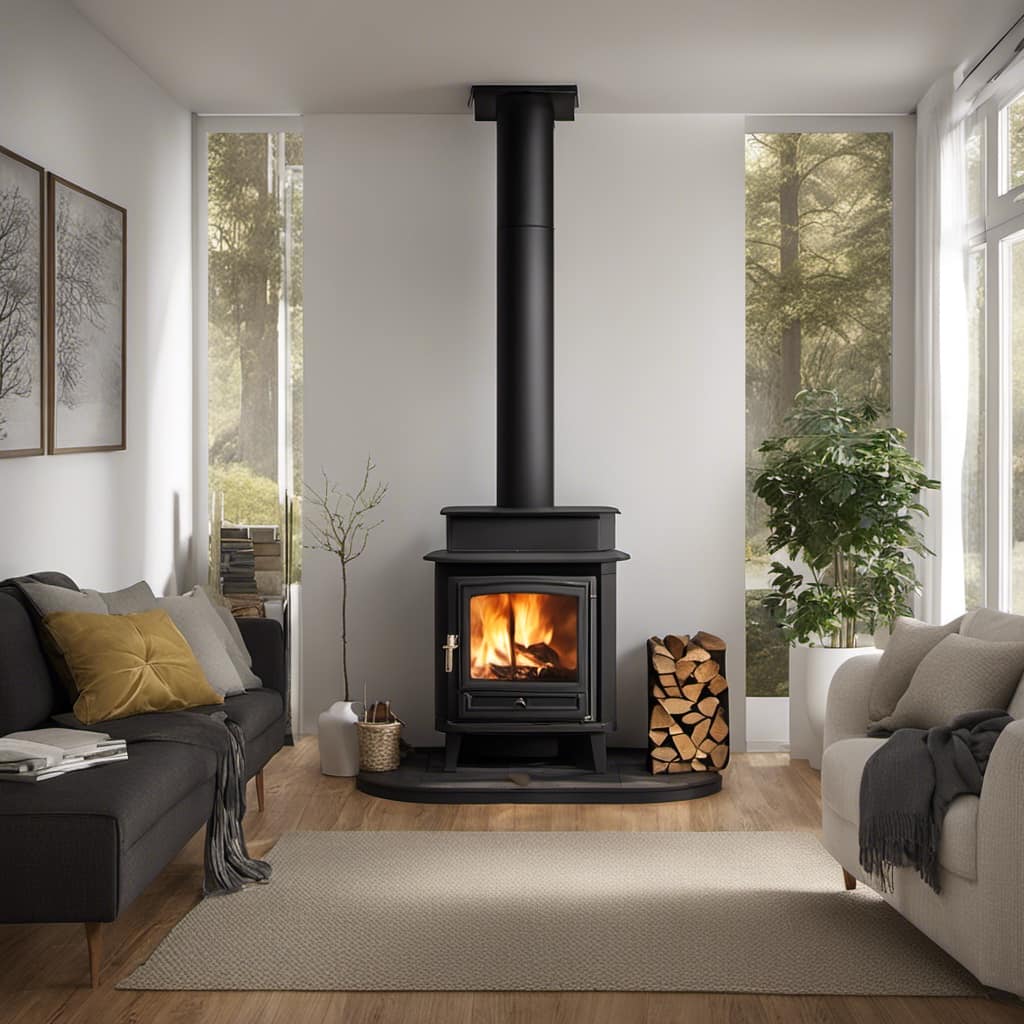I’m here to answer the pressing question: What purpose does a wood stove damper serve?
Well, let me enlighten you.
A wood stove damper is a crucial component that controls the airflow in your stove, allowing you to regulate the intensity of the fire.
By adjusting the damper, you can enhance combustion efficiency and ensure a safer environment.
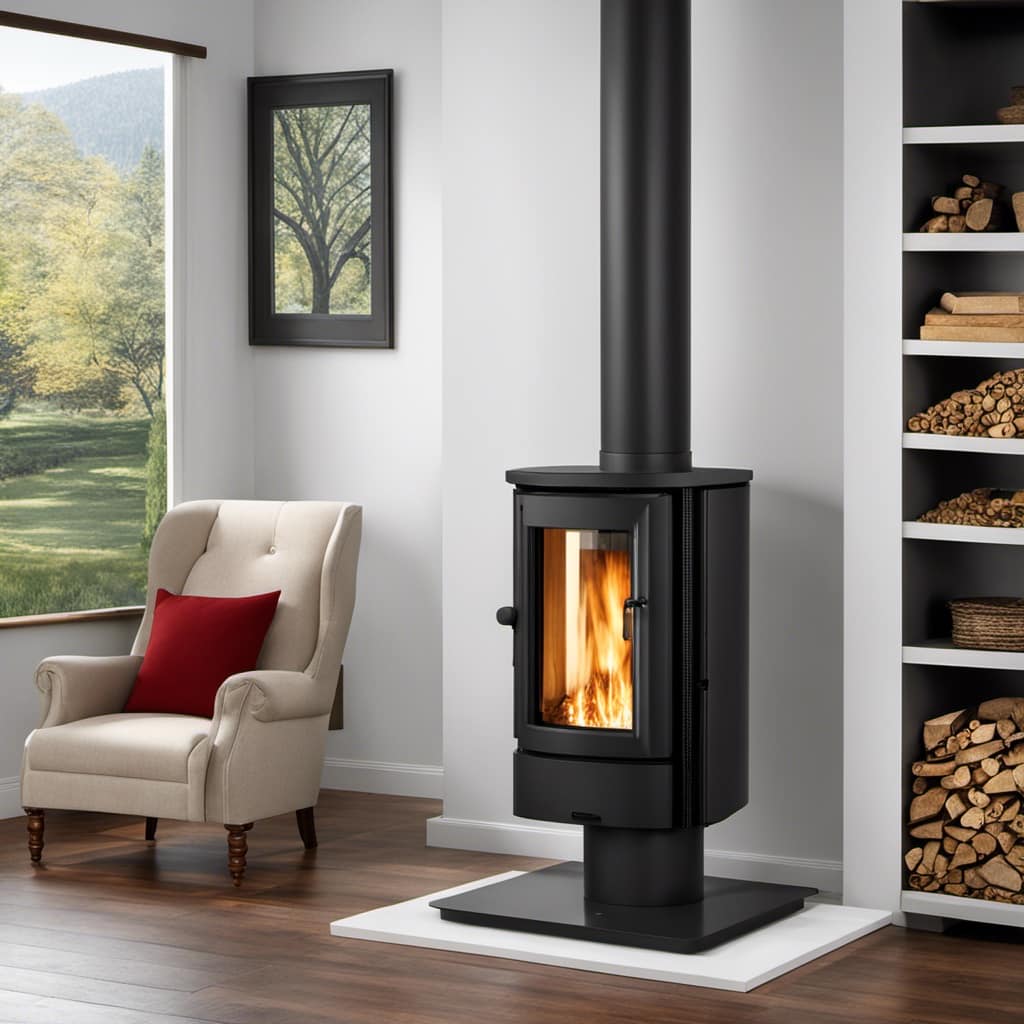
Stick around as I delve deeper into the importance, functionality, and proper usage of this essential device.
Key Takeaways
- A wood stove damper regulates airflow and heat output of the fire.
- It controls combustion rate and heat production, reducing smoke and harmful pollutants while improving air quality.
- The damper consists of a metal plate or flap that can be opened to allow more air and create a hotter burn, or closed to reduce air and slow down the burn.
- Using a wood stove damper can regulate heat output, increase fuel efficiency, reduce smoke and emissions, and extend burn time.
Importance of a Wood Stove Damper
I can’t overstate the importance of a wood stove damper in regulating the airflow and heat output of the fire. Controlling heat is essential for maintaining a comfortable temperature in your home while keeping energy costs down.
The damper allows you to adjust the amount of oxygen that reaches the fire, thus controlling the combustion rate and heat production. By reducing the airflow, you can slow down the burning process, which is particularly useful during mild weather when you only need a small amount of heat.
Additionally, a wood stove damper helps in reducing smoke. By adjusting the damper properly, you can ensure that the fire burns efficiently, minimizing the production of smoke and harmful pollutants. This not only improves air quality but also prevents the buildup of creosote in the chimney, reducing the risk of a chimney fire.
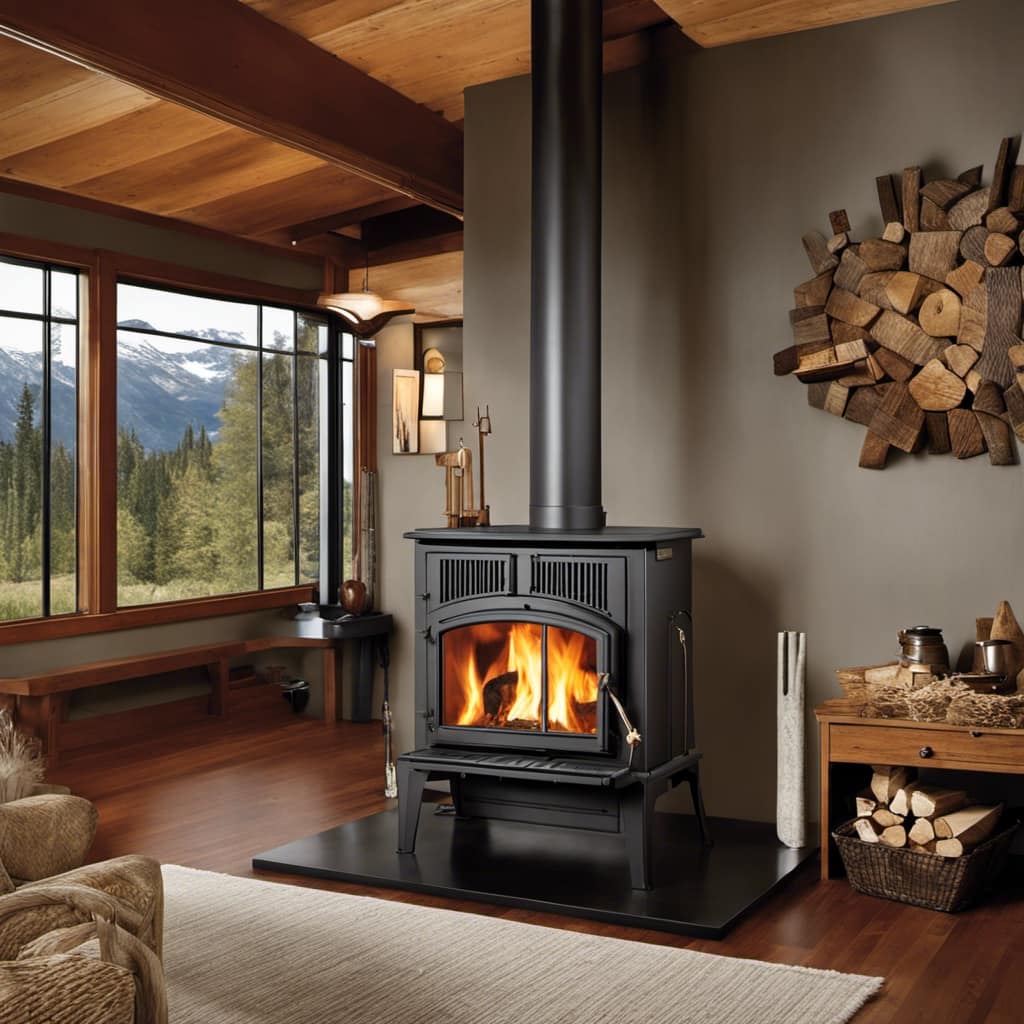
How a Wood Stove Damper Controls Airflow
Controlling the airflow, it’s really important to understand how a wood stove damper works. A wood stove damper is a device that regulates the amount of air flowing into the firebox of a wood stove. By adjusting the damper, you can control the intensity of the fire and the amount of heat produced. It is a simple mechanism, consisting of a metal plate or flap that can be opened or closed. When the damper is open, more air enters the stove, creating a hotter and more efficient burn. When it is closed, less air enters, resulting in a slower burn and less heat output.
To help you visualize the importance of a wood stove damper, here is a table showcasing the advantages of using a wood stove damper:
| Advantages of Using a Wood Stove Damper |
|---|
| 1. Regulates heat output |
| 2. Increases fuel efficiency |
| 3. Reduces smoke and emissions |
| 4. Extends burn time |
While wood stove dampers offer many benefits, they may sometimes encounter common issues. Here are a few troubleshooting tips for addressing these problems:
Damper is stuck: Apply a lubricant to the damper mechanism and gently try to move it back and forth. If it still doesn’t budge, consult a professional for further assistance.
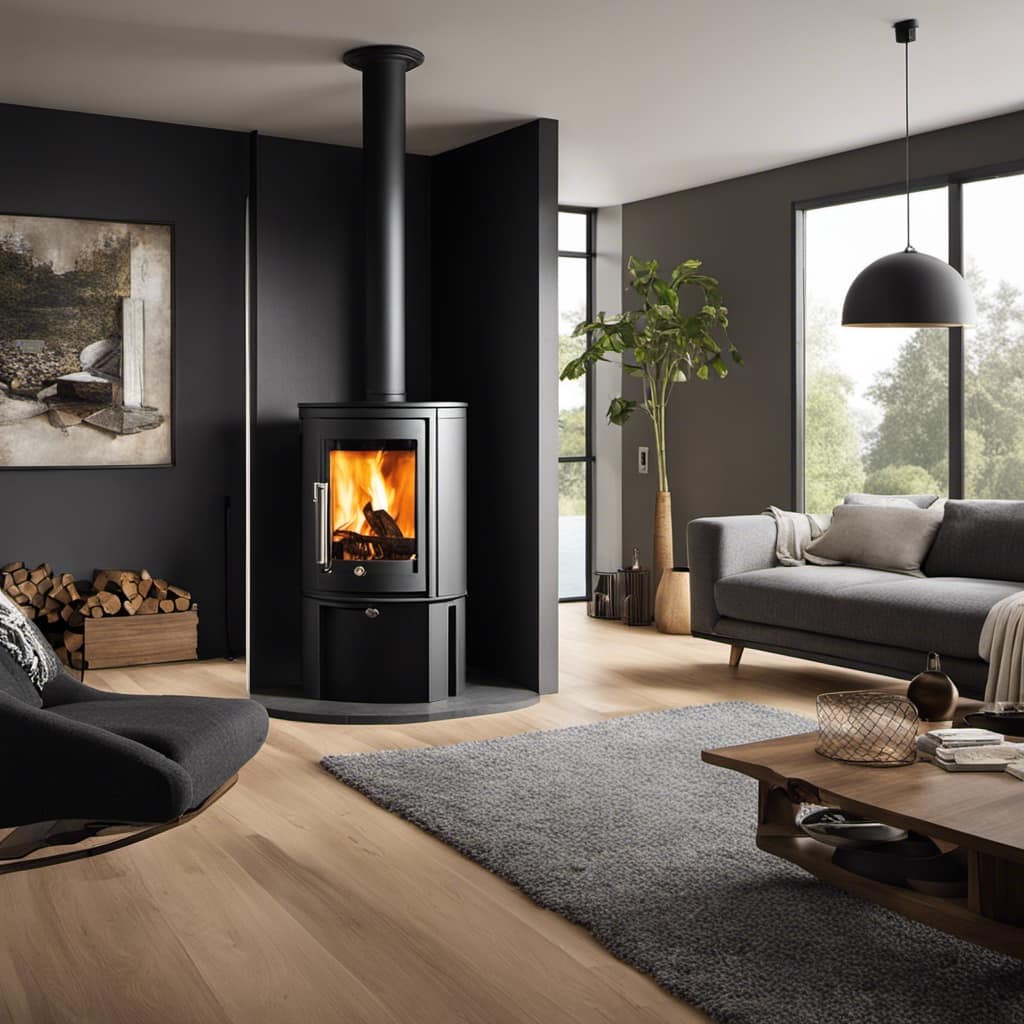
Damper is not sealing properly: Check for any debris or obstructions that may be preventing the damper from closing tightly. Clean or remove any blockages to ensure a proper seal.
Damper is difficult to adjust: If the damper is hard to move, it may be due to excessive soot or creosote buildup. Clean the damper and surrounding area to improve its functionality.
Enhancing Combustion Efficiency With a Damper
Enhancing combustion efficiency with a damper is crucial for maximizing the heat output of my wood stove. By controlling the airflow, a damper allows me to achieve a more efficient burn, resulting in increased heating performance.
Here are three ways a damper can enhance combustion efficiency:
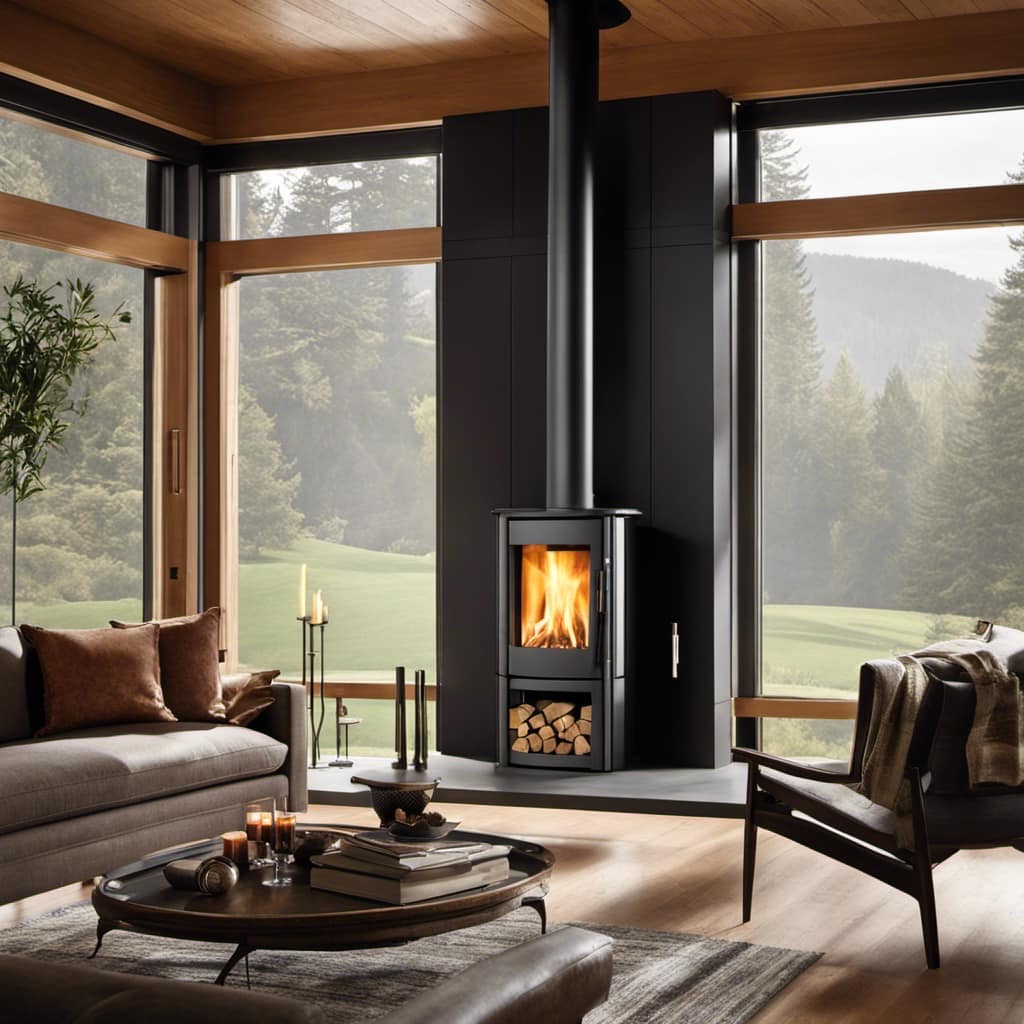
Regulating Oxygen Intake: By adjusting the damper, I can control the amount of oxygen entering the firebox. This ensures a proper air-to-fuel ratio, promoting a cleaner and more complete burn.
Retaining Heat: A damper helps to retain heat within the stove by limiting the escape of hot gases. This allows for a longer and more consistent heat output, reducing the need for frequent refueling.
Reducing Smoke Emission: By optimizing the airflow, a damper minimizes the production of smoke. This not only improves air quality but also prevents the buildup of creosote in the chimney, reducing the risk of chimney fires.
Safety Measures With a Wood Stove Damper
Maintaining regular maintenance and inspections of the damper ensures the safety and proper functioning of my wood stove.
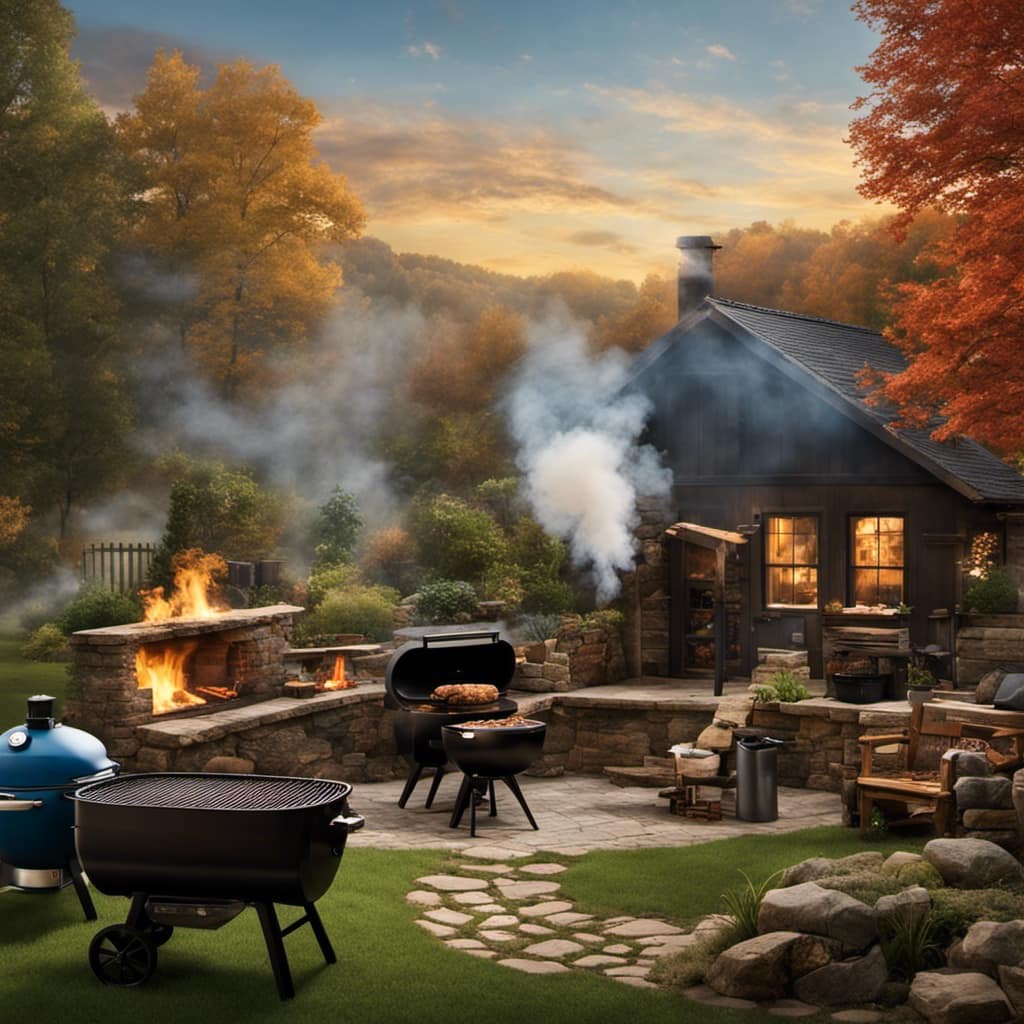
To keep the damper in good condition, there are a few maintenance tips to follow. Firstly, it’s important to clean the damper regularly to remove any soot or debris that may have accumulated. This can be done by using a brush or vacuum to gently remove the buildup.
Secondly, check for any signs of damage or wear, such as rust or loose parts, and repair or replace as necessary. Common damper problems include a stuck or difficult-to-operate damper, which can be caused by debris or rust. In such cases, cleaning and lubricating the damper mechanism can often solve the issue.
Tips for Properly Using a Wood Stove Damper
I find it helpful to position the damper in the fully open position before starting a fire in my wood stove. This allows for maximum airflow and helps the fire to start more easily.
Here are some tips for cleaning a wood stove damper and troubleshooting common issues:
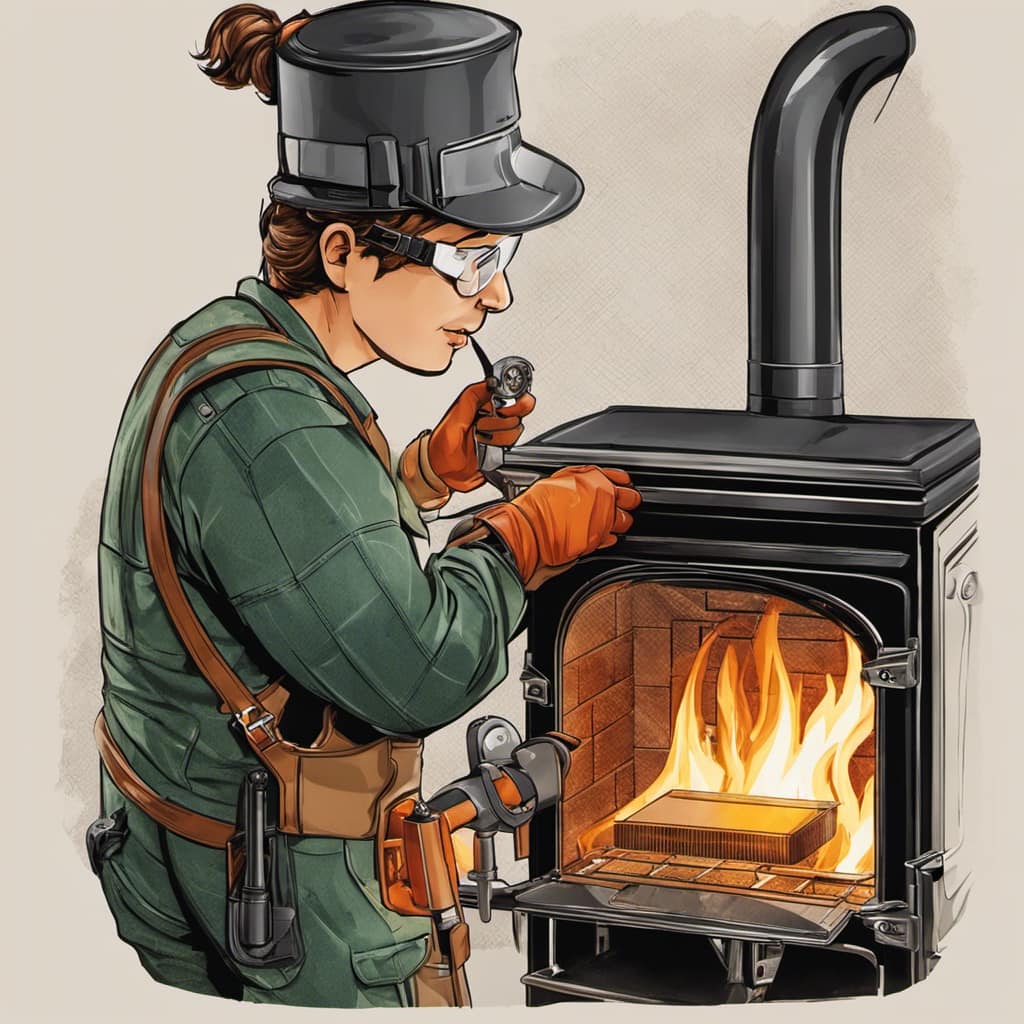
Regular cleaning: To keep your damper functioning properly, it’s important to clean it regularly. Use a wire brush or a damp cloth to remove any soot or debris that may have accumulated.
Inspect for damage: Check the damper for any signs of damage, such as cracks or warping. If you notice any issues, it’s best to replace the damper to ensure proper operation.
Lubrication: Apply a small amount of high-temperature lubricant to the damper’s hinges to ensure smooth operation. This will prevent it from sticking or becoming difficult to open or close.
Is the Purpose of the Damper the Same for All Types of Wood Stoves?
When it comes to the purpose of a fix damper on a jotul wood stove, it remains the same across all types of wood stoves. The damper helps regulate the airflow, controlling the intensity of the fire and the rate at which the wood burns, ultimately optimizing the stove’s performance.
Frequently Asked Questions
Can a Wood Stove Damper Be Used With Other Heating Sources, Such as a Gas Furnace or Electric Heater?
Yes, a wood stove damper can be used with other heating sources like a gas furnace or electric heater. The pros include increased efficiency and heat control, while the cons may include installation challenges and potential safety concerns.

Is It Possible to Install a Wood Stove Damper in an Existing Fireplace?
Installing a wood stove damper in an existing fireplace is possible. It offers benefits like improved heat control and increased energy efficiency. However, it is important to consult a professional for proper installation and ensure compatibility with your fireplace.
How Often Should a Wood Stove Damper Be Cleaned or Inspected for Maintenance?
Wood stove damper maintenance is crucial to ensure proper functioning. It should be inspected and cleaned regularly to prevent buildup and ensure proper ventilation. Signs of a malfunctioning damper include difficulty controlling the fire and excessive smoke.
Are There Any Specific Guidelines or Regulations Regarding the Installation of a Wood Stove Damper?
When it comes to installing a wood stove damper, there are important guidelines and regulations to follow. These ensure safety and efficiency. It’s crucial to adhere to these rules for a properly functioning and secure wood stove system.
Can a Wood Stove Damper Help Reduce Energy Consumption and Lower Heating Costs?
A wood stove damper can help reduce energy consumption and lower heating costs. By controlling the airflow, it increases the efficiency of the wood stove, ensuring that more heat stays inside the room instead of escaping through the chimney.
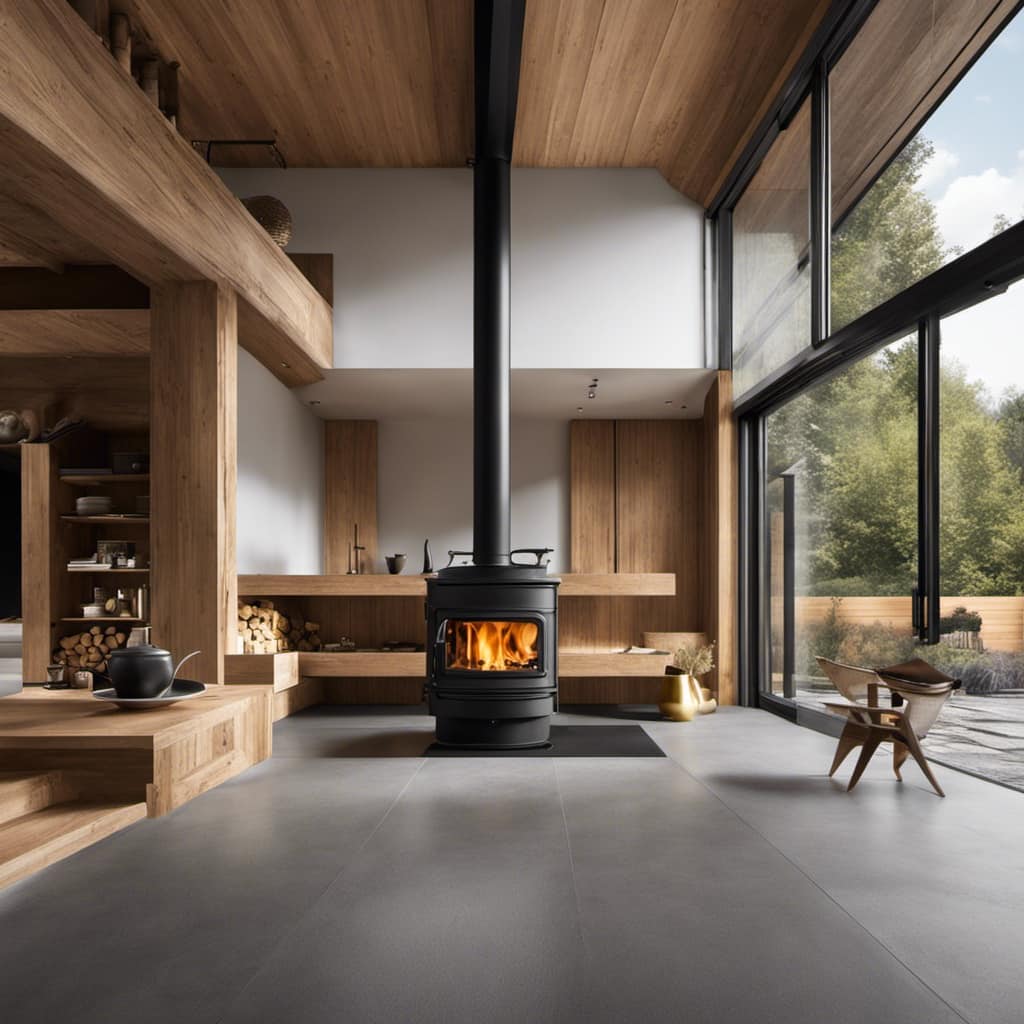
Conclusion
In conclusion, a wood stove damper is a crucial component that controls the airflow in a wood stove. It helps enhance combustion efficiency and ensures safety by regulating the amount of oxygen reaching the fire.
By properly using a damper, you can optimize heat output and reduce fuel consumption. So remember, when it comes to wood stoves, a damper is like the conductor of a symphony, orchestrating the perfect balance of air and heat for an efficient and cozy fire.
Growing up surrounded by the vast beauty of nature, Sierra was always drawn to the call of the wild. While others sought the comfort of the familiar, she ventured out, embracing the unpredictable and finding stories in the heartbeat of nature.
At the epicenter of every remarkable venture lies a dynamic team—a fusion of diverse talents, visions, and passions. The essence of Best Small Wood Stoves is crafted and refined by such a trio: Sierra, Logan, and Terra. Their collective expertise has transformed the platform into a leading authority on small wood stoves, radiating warmth and knowledge in equal measure.





